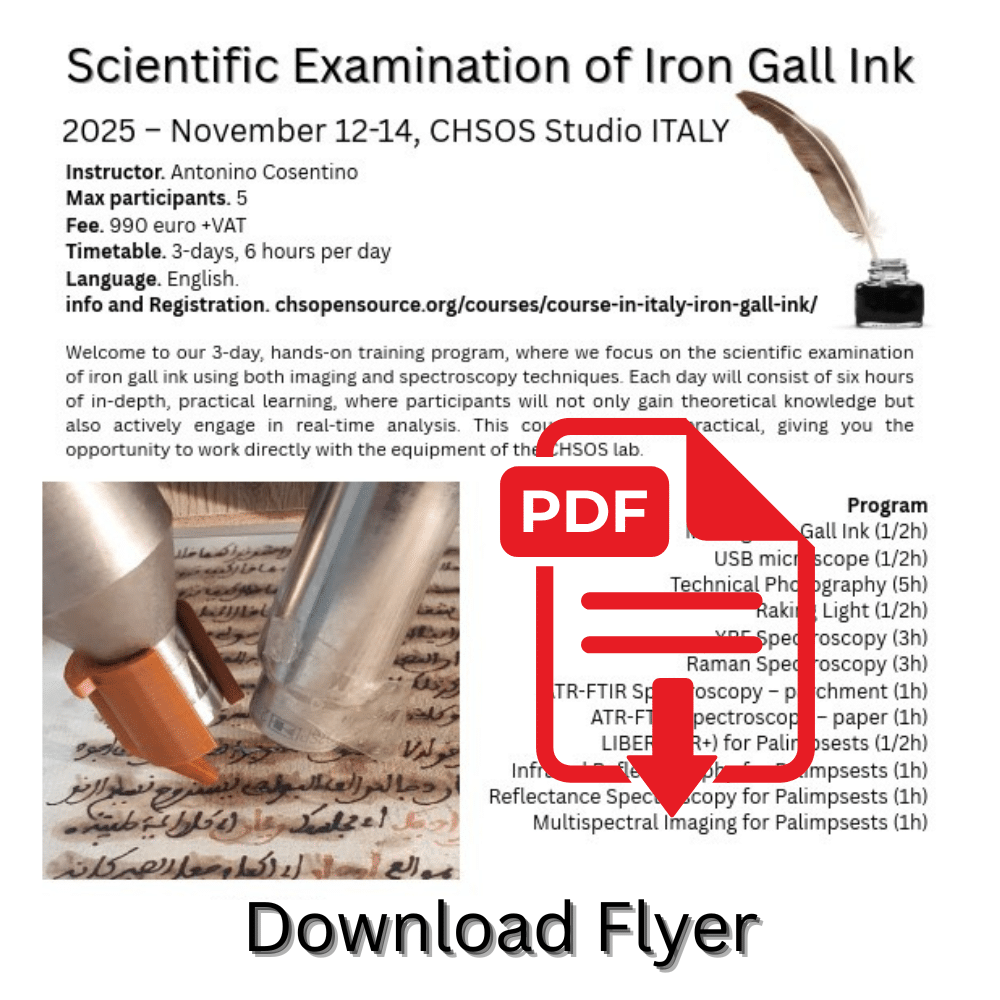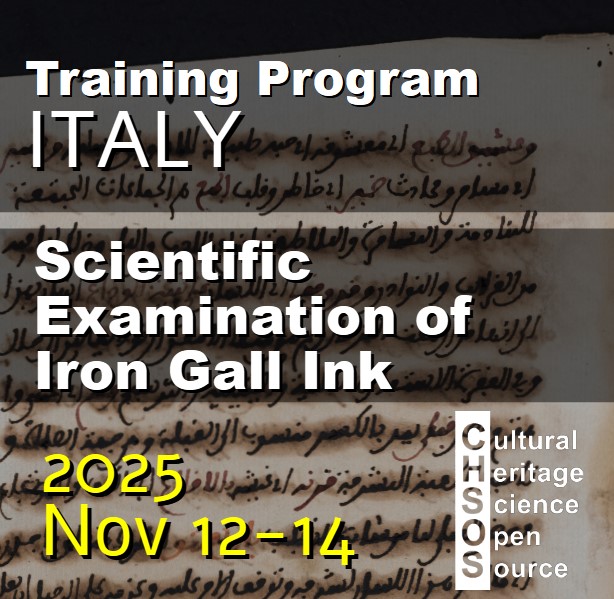Advanced Photographic Documentation (APD) (2 hour / 370 euro)
The Advanced Photographic Documentation (APD) Training module presents a set of low-cost methods using a digital camera and few tools to complement an art and architecture examination. Former Students.
-
- 360º virtual tours. The Training module shows how to create virtual tours and upload them into a webpage. They are useful to illustrate conservation projects, see Save the Soul of Savoca.
-
-
- Reflectance Transformation Imaging (RTI) is a computational photographic technique used in a number of fields related to art examination and documentation. RTI provides a virtual and enhanced visualization of an object’s surface where the lighting direction can be changed interactively and enhancements can be performed to make surface’ details more visible. It relies on the Polynomial Texture Map method which is an image-based representation of the object’s surface achieved by capturing the object under lighting from different directions. It is used to visualize tiny incisions in paintings and historical prints as well as to document highly reflective objects such as coins. The Training module illustrates our lightweight equipment for standard and macro RTI and the procedures to acquire and edit images to create the RTI visualization file.
-
We use WebGLRTI Viewer developed by G. Palma, Visual Computing Laboratory – ISTI – CNR
-
- Focus Stacking photography. To document small artistic and historical objects, we use an automated macro rail for focus stacking, Photographing small objects that are flat is pretty simple and straightforward. On the other hand small objects that extend in space, as a piece of jewelry, are challenging because macro (close-up) photography implies very shallow depth of field. Even at large f-number it is possible to focus only a plane of the subject and the rest is out of focus. To get all the subject on focus it is necessary to use the focus stacking method.
- 3D Photomodeling. Photomodeling is the creation of 3D models from 2D pictures taken with an ordinary camera. This method is a cost-effective alternative to laser scanning , for fast documentation and survey, and the final model can be easily exported and shared. The Training module discusses the workflow using Agisoft PhotoSscan to produce 3D models and upload them on a webpage. They can be used to promote a conservation projects, see Catacombs, Syracuse, XIII century abside, Nunziatella.
Catacomb Syracuse
by antonino
on Sketchfab








